#Conservation status: vulnerable
Explore tagged Tumblr posts
Text
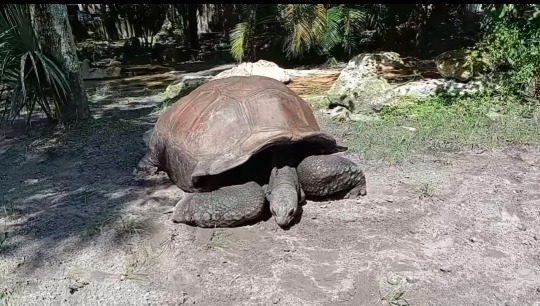
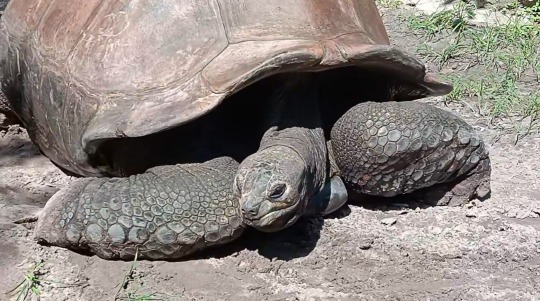
Big Jim is probably one of the oldest animals in the park. The Aldabra Tortoise can live far past 100 years, even past 200!
#not roller coasters#Big Jim the Aldabra Tortoise#Aldabra Tortoise#tortoise#giant tortoise#reptiles#2024#August 2024#zoo#zoo animals#wild animals#animals#animal#zoology#busch gardens animals#animal ambassador#animal conservation#conservation#Conservation status#Conservation status: vulnerable#vulnerable species#vulnerable#threatened species#threatened#endangered species#endangered#critically endangered#critically endangered species#busch gardens#busch gardens tampa bay
5 notes
·
View notes
Text
Genuinely thinking an animal is ugly is such a strange concept to me, I don't get how you can apply human beauty standarts to animals. Marabou storks for example are often called ugly and, yeah, they're scraggly and kind of weird looking but like. That's a bird. That's not a person. What do you mean it's ugly. it's a bird
#im sure ive called animals ugly as a joke but i dont think ive ever genuinely thought that#this isnt me saying youre a bad person for finding some animals ugly or something that would be ridiculous#i just find the concept weird#also i just googled marabou storks to check iut their wikipedia page and found out their conservation status is least concern :)#that made me very happy dont know why but i expected them to be at least vulnerable
15 notes
·
View notes
Text
Scientists have for the first time in 185 years confirmed the presence of the Asian small-clawed otter in Nepal, thrilling conservationists and researchers looking for clues to its existence here.
The last time the Asian small-clawed otter (Aonyx cinereus), the smallest of the world’s 13 known otter species, was recorded by scientists in Nepal was in 1839.
“After years of speculation about its presence in Nepal, we can finally confirm that the small-clawed otter lives on in the country,” said Mohan Bikram Shrestha, the lead author of a short note published in the latest edition of the bulletin of the Otter Specialist Group at the IUCN, the global wildlife conservation authority.
Although historically three species of otters are believed to occur in Nepal, modern researchers had until now only confirmed the presence of smooth-coated otters (Lutrogale perspicillata) and Eurasian otters (Lutra lutra), with a question mark hanging over the small-clawed otter. During that time, reports have come in, never confirmed until now, of small-clawed otter sightings in Makalu Barun National Park in Nepal’s eastern Himalayas and Kailali and Kapilvastu districts in the western plains...
“As it was found in a fragile and injured state, the forest officers decided to feed and nurse it, but they didn’t know which species it belonged to,” Shrestha. The forest officers, led by Rajeev Chaudhary, shared the images and video of the animal, known locally as saano owt, with the IUCN Otter Specialist Group. The members of the group then confirmed it to be a small-clawed otter.
The discovery comes after the species was confirmed for the first time in 2022 in the Darjeeling area of neighboring India, which shares a similar topography with eastern Nepal. “Following the discovery in Darjeeling, we had been keeping our eyes open for the species in eastern Nepal, but it showed up in the west,” Shrestha said.
There have also been reports of sightings of the animal in the eastern parts of the country, but none of them have been confirmed.
The Asian small-clawed otter is classified as vulnerable to extinction on the IUCN Red List. Its range stretches from Indonesia in the east to Nepal in the west...
As for smooth-coated otters, although their presence in the country has never been in question, sightings of them still excite conservationists. This was especially the case in Chitwan National Park, where their reappearance in September 2023 after two decades spurred calls for more research.
“This is an incredibly significant finding,” Sanjan Thapa, deputy coordinator of the Otter Specialist Group’s Himalayan region, said of the latest development. “We had long suspected that the Asian small-clawed otter might still survive in Nepal, but without concrete evidence, its status remained uncertain.”
Thapa, part of the team that confirmed the 2023 sighting of the smooth-coated otter in Chitwan, said researchers tend to feel a bit edgy about a species when it hasn’t been reported for more than 50 years.
“We had received suggestions that we remove the small-clawed otter from the Nepal otter list as it hadn’t been found for a long time,” he said. “However, we decided not to do so in the hope that it would be rediscovered sooner or later.”
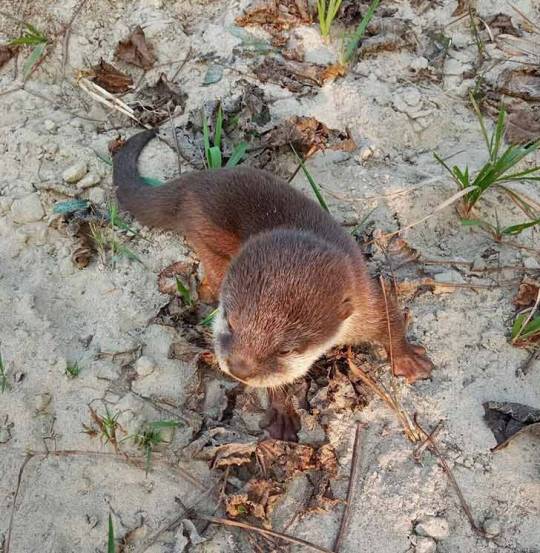
The discovery adds to the challenge of saving Nepal’s otters as the country prepares to finalize and implement an action plan for otters, Thapa said. “Now that we have concrete proof that the small-clawed otter is also found in Nepal, we need to incorporate it in our policies and programs,” he said.
Both Eurasian and smooth-coated otters are protected under the country’s Aquatic Animal Protection Act. The newly rediscovered species, however, isn’t on the list. “The first step would be to add the species to the list,” Thapa said."
-via Mongabay, February 5, 2025
#otters#endangered species#mustelid#nepal#asia#india#conservation#wildlife#wild animals#wildlife photography#baby animals#good news#hope
4K notes
·
View notes
Note
got any good hellbender pics? i love them
One of my favorite North American animals!!!

Eastern Hellbender (Cryptobranchus alleganiensis), family Cryptobranchidae, endemic to some freshwater rivers systems of the eastern United States
The largest salamander in the Americas, it grows to a total maximum length of up to 40 cm (15.7 in).
In the same family as the Japanese and Chinese Giant Salamanders.
The side skin folds can absorb oxygen from the water.
They are also called “snot otters”.
They feed mainly on crayfish but also eat worms, aquatic insects/insect larvae, snails, fish, and tadpoles.
They only live in clean clear water streams.
Their conservation status is Vulnerable, due to siltation, sedimentation, dams, and pollution.
photograph by Ray Meibaum
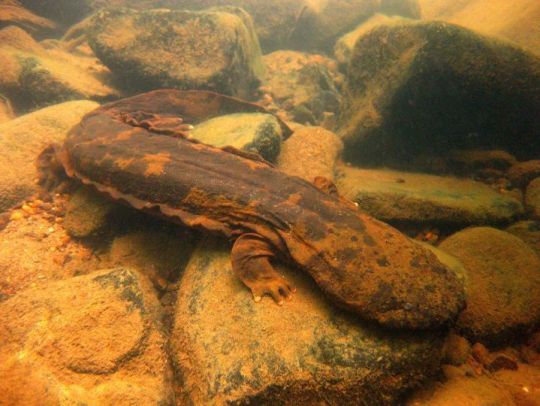
photograph by Mark Tegges

photograph by Lori Williams | NCWRC

photograph by David Herasimtschuk Freshwaters Illustrated

photograph by Isaac Szabo
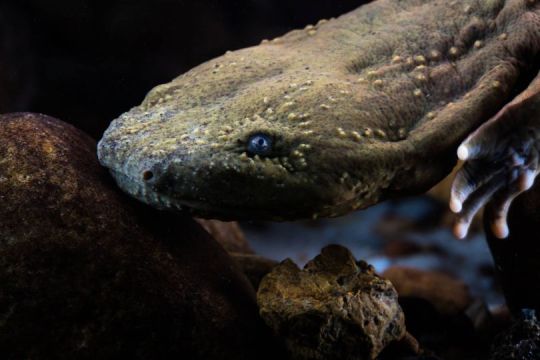
photograph by Ryan Hagerty/USFWS
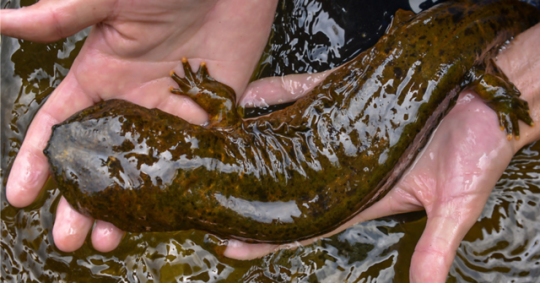
photograph by Luke Weir
#hellbender#cryptobranchus#salamander#cryptobranchidae#amphibian#herpetology#animals#nature#north america
571 notes
·
View notes
Note
wait ok genuinely kind of interested in your opinion on porn now......... if only because those big 3 you mentioned are always the reasons i see people throwing out so id love to hear a deeper take than that
I'm genuinely surprised anyone could follow me and not know my stance on porn, but that's okay. simplified and in no particular order and in no means exhaustive:
porn creates perverse incentives
porn normalizes the purchase of women as sexual objects for men to use
porn is often called "rape on tape" by feminists, which I mostly agree with in the sense that if a woman would otherwise not have had sex except that she is being paid, then she is not consenting. you cannot purchase consent, the consent is not meaningful then.
additionally, you can not verify if you are watching people be raped in any other way. porn sites are filled with stolen videos, coerced videos, actual minors, aggressive rape that was filmed with or without the victim's knowledge, and other videos of this nature. there is no way to verify this at all from videos that are somehow not these things. things like "amateur" are often just marketing by the porn company or pimp, or they're stolen videos.
porn creates a social script for sex. this social script is least of all - boring and predictable. it also reinforces the long standing conservative gender understanding (see 2). porn also reinforces ideas of homophobia and racism under the guise of "taboo." porn is literally so conservative, but because it's considered "shocking" to "puritans" (religious men watch porn all the time), people talk like it's this liberal fantasy. porn is constantly reestablishing the status quo in the most perverse ways.
it's been demonstrated that people who are porn addicts very quickly escalate to more violent porn, and that this plays out in their sex lives with their (often vulnerable) sex partners.
the violence that happens in porn is real. the idea that it's a "fantasy" is marketing by porn website and pimps. if a man slaps a woman across the face, that really happened. why does it matter if she says "yes" to it - that's her "job" so how can she say no? (see 3 and also 4).
there is so much evidence and testimony by porn stars of the absolutely awful and terrifying conditions in which they work, even in the quote unquote "real" industry. drugs, alcohol, violence, coercion, exposure to STIs, homelessness, pimping, prostitution, mental illness, suicide, lack of benefits. It's bananas that anyone would be surprised by this when it's pointed out, we're talking about an industry that films sex on video. The majority of people in the sex industry want out. It ruins their lives, and once in it's very hard to leave and lead a normal life. The idea that the industry needs regulation to be "fixed" is bizarre and just seems like pimp and porn industry marketing to get people to look the other way.
Poverty creates porn. Social welfare for the poorest of our women would prevent them from entering the industry in the first place. Women go into porn out of need, not desire. social media pushes that porn stars loooove their jobs is 1. porn site and pimp propaganda 2. literally marketing because men want to believe this.
I am not religious, I don't believe in god. I love sex and masturbation. it's the most natural thing in the world and people don't actually need to "learn" how to do it - it's innate within us. Porn is just one more way to humiliate women in a misogynist society that requires women to be fearful of sex and rape constantly, and uneducated in their own sexual desires and boundaries.
521 notes
·
View notes
Text



Back with the Black-footed Ferret
The black-footed ferret, also known as the American polecat or the prairie dog hunter (Mustela nigripes) is a species of mustelid native to central North America; its historical range stretched from southern Canada to northern Mexico. Its habitat overlaps with that of prairie dogs, and largely consists of prairie, scrubland, and steppe environments.
Black-footed ferrets rely on grasslands for food, and the average adult maintains a territory of 148 acres (60 ha). They are highly solitary, and both males and females will fiercely defend their space from other ferrets. Within this range, the prairie dog hunter feeds almost exclusively on prairie dogs; when prairie dogs aren't available, their diet is supplemented with mice, squirrels, and rabbits. Adults hunt mainly at night, and during the day they will shelter in abandoned prairie dog burrows. While fearsome fighters, both adults and kits are vulnerable to predation from birds of birds of prey, owls, coyotes, badgers, foxes, and bobcats.
Though they generally are not social, American polecats do interact with other polecats once a year to mate, generally in March or April. Females will actively seek out and entice males, and individuals with both sexes likely mate with multiple partners. After mating, the female returns to her territory, and after a 45 day pregnancy she gives birth to a litter of 1-6 kits. The young are blind and deaf at birth, but grow quickly and are weaned at about 6 weeks old. In the fall, they leave their mother to establish their own territories, and reach full maturity by the following year. Adults can live up to 12 years in the wild.
Both male and female black-footed ferrets have similar appearances. Like other ferrets, they have an elongated body and triangular head, to better help them squeeze into small burrows in search of prey. The paws, the tip of the tail, and patches around the eyes are marked in black; the rest of the body is tan, russet, or brown with a light cream underbelly. The average adult measures 50 cm (19.7 cm) long and weighs 650 g (1.43 lb); females are slightly smaller than males.
Conservation status: M. nigripes is considered Engangered by the IUCN. Threats come from habitat destruction and the decimation of their primary food source, as well as human-introduced disease. There is only one known wild population left, though there are a number of captive-bred populations in zoos and reintroduction programs. One group, currently run by Native Americal tribal biologists, is raising funds to continue their work restoring black-footed ferrets to their native habitats (April 18, 205).
Photos
Clyde Nishimura
J. Michael Lockhart
Chris Prague
#black-footed ferret#Carnivora#Mustelidae#polecats#weasels#ferrets#mustelids#carnivores#mammals#grasslands#grassland mammals#scrubland#scrubland mammals#north america#central north america#animal facts#biology#zoology#ecology
398 notes
·
View notes
Text

*8/31 - Hawaiian rail, Porzana sandwichensis (EX)
This year’s theme for Avian August is dedicated to the incredible birds of Hawaii! I’ve put together a list of mostly endemic species, plus a mix of iconic seabirds and forest birds, as well as a few extinct species, so there’s lots to learn, draw, and appreciate together.
✨How to join:
* Use the daily prompts as your guide to create bird art each day in August - or pick a few favorites and go at your own pace!
* Post your work anywhere you like and tag it with #Avian August or #Avian August 2025 so we can all find and share each other’s work.
Whether you’re here to learn, sketch, paint, or just admire - remember, as always, to take breaks, have fun, and let these beautiful Hawaiian birds inspire you. Thank you for joining! 🌈🐦🌴 I can’t wait to see all your beautiful art this year.
~*~
I’ve added the conservation status, just to be clear: vulnerable (VU), near threatened (NT), endangered (EN), least concern (LC), extinct (EX), critically endangered (CR).
I tried my best to be thorough, but if there are any mistakes I’ve made, please point them out. 💖
#artists on tumblr#avianaugust#avianaugust2025#avian august#avian august 2025#art prompt#drawing prompt#monthly art challenge#bird art#bird artist#birds#digital art#nature art#birb#hawaiian birds#hawaii#hawaiʻi#art challenge
325 notes
·
View notes
Text

Xerces Society: Announcing The State Of The Bees Initiative: Our Plan To Study Every Wild Bee Species In The U.S.
This is really exciting news! For those unaware, the Xerces Society has been focusing on invertebrate conservation for over fifty years, and has pioneered a lot of the work to bring awareness to the devastating losses of not only insects but other terrestrial and aquatic invertebrates. It gets its name from the Xerces blue butterfly (Glaucopsyche xerces), the first North American butterfly driven to extinction by human activities.
Even if you haven't heard of the Xerces Society, you've probably come across various "Save the Bees!" campaigns. These frequently focus on the domesticated European honey bee (Apis mellifera), which, while it may be important to crop pollination in many parts of the world, is not a part of natural ecosystems in places like the Americas and Australia, and can be considered an invasive species at times. With the rise of colony collapse disorder (CCD) particularly after the turn of the 21st century, where entire domestic honeybee colonies would die off, the need to preserve bees began to gain wider public acknowledgement.
But what many people don't realize is that it is the thousands upon thousands of other native bee species worldwide that are in greater danger of extinction. They don't have armies of beekeepers giving them safe places to live and treating them for diseases and parasites. More importantly, where honey bees may visit a wide variety of plants, native bees often have a much narrower series of species they visit, and they are quite vulnerable to habitat loss. Most bees are not as social as honey bees and live solitary lives, unseen by the casual observer.
Invertebrates in general often suffer from a lack of conservation information, meaning that particularly vulnerable species may fly under the radar and risk going extinct without anyone realizing until it's too late. This ambitious program by the Xerces Society aims to solve that problem, at least for the 3,600+ species of bee in the United States. If they can assign a conservation status to each one, then that strengthens the argument toward protecting their wild habitats and working to increase their numbers. Hopefully it will also prompt more attention to other under-studied species that are in danger of going extinct simply because we don't know enough about them.
#bees#save the bees#invertebrates#arthropods#insects#entomology#nature#wildlife#animals#ecology#environment#conservation#science#scicomm#endangered species#extinction#pollinators#Xerces Society#Xerces blue
599 notes
·
View notes
Text
Round 3 - Cephalopoda - Vampyromorphida

(Source)
Order: Vampyromorphida
Common Name: “Vampire Squid”
Family: Vampyroteuthidae
One living species: Vampire Squid (Vampyroteuthis infernalis)
Anatomy: reduced internal shell; eight arms lined with spines, contained within a fleshy web; only the tips of the arms have suckers; two pouches in the webbing contain tactile velar filaments; small fins projecting from the lateral sides of the mantle; almost entirely covered in light-producing photophores; colour varies from velvety jet-black to pale reddish
Size: 15 cm (5.9 in) long body; maximum total length (includes arms) around 30 cm (1 ft)
Diet: mainly marine snow (detritus) and crustaceans, large adults may take fish opportunistically
Habitat/Range: extreme deep sea of the tropics and subtropics, depths from 600 to 900 metres (2,000 to 3,000 ft) or more (oxygen minimum zone)
Evolved in: Jurassic
Conservation Status: unknown, but may be at risk from microplastic pollution due to diet of marine snow

Propaganda under the cut:
The Vampire Squid has the largest eyes in the animal kingdom, proportionately, with a 6 inch (15 cm) body possessing eyes 2.5 cm (1 in) in diameter. Their large eyes are accompanied by similarly expanded optic lobes of their brain. This allows the Vampire Squid to detect distant bioluminescence: signs of animals, such as prey aggregations or potential mates.
The Vampire Squid lives in a discrete habitat known as the oxygen minimum zone (OMZ). Within an OMZ, the saturation of oxygen is too low to support aerobic metabolism in most complex organisms. The Vampire Squid is the only cephalopod able to live its entire life cycle in the minimum zone, at oxygen saturations as low as 3%. To cope with life in the suffocating depths, Vampire Squids have developed several adaptations: the lowest mass-specific metabolic rate of all deep-sea cephalopods, hemocyanin within their blood that binds and transports oxygen more efficiently than in other cephalopods, gills possessing an especially large surface area, weak musculature and a reduced shell, and ammonium-rich gelatinous tissues closely matching the density of the surrounding seawater. Living in an OMZ keeps the Vampire Squid safe from many large, apex predators.
If disturbed, the Vampire Squid will curl its arms up outwards and wrap them around its body, turning itself “inside-out”, making itself seem larger, and exposing the spiny projections on its tentacles (cirri) (see gif above). The underside of its cape is black, concealing most of the body's photophores. The glowing arm tips are clustered together far above the animal's head, diverting attack away from critical areas. This anti-predator behavior is dubbed the "pumpkin" or "pineapple" posture. The armtips regenerate, so if they are bitten off, they can serve as a diversion allowing the animal to escape while its predator is distracted.
Like many deep-sea cephalopods, the Vampire Squid lacks ink, but if highly agitated, it may shed a sticky cloud of bioluminescent mucus containing orbs of blue light from its arm tips. This luminous barrage, which may last nearly 10 minutes, serves to dazzle would-be predators and allows the vampire squid to disappear into the dark without the need to swim far. The glowing mucus is also able to stick to the predator, making it more vulnerable to other predators and visible to other prey. The display is made only if the Vampire Squid is very agitated, due to the metabolic cost of mucus regeneration.
179 notes
·
View notes
Text


Luna and Madju enjoying the nice weather on a cool October afternoon!
#not roller coasters#Luna the orangutan#Madju the orangutan#orangutan#orangutans#Bornean orangutan#primates#apes#2024#October 2024#zoo#zoo animals#wild animals#animals#animal#zoology#busch gardens animals#animal ambassador#animal conservation#conservation#Conservation status#Conservation status: critically endangered#vulnerable species#vulnerable#threatened species#threatened#endangered species#endangered#critically endangered#critically endangered species
6 notes
·
View notes
Text
Cool Zoology Stories of 2024
Happy new year! As we head into 2025, here's a few fun zoology highlights from the last year.

The Iberian Lynx is no longer endgangered
Species Concerned: Iberian Lynx (Lynx pardinus)
Source: Here
Image Source: Here
The International Union for the Conservation of Nature (IUCN) is the organisation responsible for compiling information on the size and trends seen in species’ wild populations and assigning them a “conservation status” based on how threatened they are determine to be. There are three increasingly concerning categories a species may be sorted into (vulnerable, endangered or critically endangered, in that order,) and while species may be classified as increasingly threatened if their populations continue to decline they can also be raised to a less threatened category should their population increase. In the summer of 2024, the IUCN made an exciting announcement; based on an assessment carried out throughout 2023 the Iberian Lynx (the most threatened of the four lynx species, and among the world’s rarest wildcats) had done just that, being upgraded to vulnerable from endangered!
Easily distinguished from other lynxes by it’s the distinctive pair of “beard-like” fur tufts on its chin, the Iberian Lynx, as its name suggests, is found only in the southern Iberian Peninsula which stretches across Spain and Portugal. Its already small range has shrunk further due to rapid declines in its primary prey, the European Rabbit (Oryctolagus cuniculus), further aggravated by habitat loss, disease outbreaks, conflict with humans and the addition genetic pressures that species with small populations experience. By 2001 the species’ population had declined to as few 62 adults, but since then intensive efforts to increase the populations of European Rabbits, protect remaining Iberian Lynx populations, introduce captive-bred individuals and encourage land owners to reduce impacts on any lynx populations on their land has allowed for a steady increase – as of 2023 the population was believed to have risen to 648 adults, and members of this species have returned to long-vacant regions of their former range! While the Iberian Lynx remains threatened and continued efforts are needed to maintain these increases, the species’ new conservation status shows that these efforts are working, and that there may yet be hope for this beardy big cat’s future.

Big News on Baby Sharks!
Species Concerned: Great White Shark (Carcharodon carcharias)
Source: Here
Image Source: Here
Despite its large size, near-cosmopolitan distribution and status as easily one of the most famous and recognisable fish on earth, there’s a lot we don’t know about the Great White Shark. In particular, there are some major gaps in our understandings of the mating habits of adult Great Whites, and in the early development of their pups. This year, however, progress was made in filling some of these gaps; in April an article published in the journal Frontiers in Marine Science described activity within a “creche” of young (1-6 year old) Great Whites off the coast of California, demonstrating that (among other things) they moved between deeper and shallower coastal waters throughout the day and seemed to carefully position themselves within the water column in order to maintain a healthy body temperature and thereby facilitate growth and development (unlike many fish adult Great White Sharks are able to regulate their body temperature through metabolic activity much like mammals can, but it seems that younger individuals have a reduced ability to do so and are more reliant on environmental conditions to regulate their body temperatures. This is particularly exciting as an article published this January to another journal, Environmental Biology of Fishes critically examined footage recorded by wildlife photographer TheMalibuaArtist of a small, round-featured Great White Shark off also found near California’s coast that had an odd, pale film attached to its skin and concluded that (while it is possible that the film is the result of some previously undocumented disease or mutation) it may represent the first ever video footage of a newborn Great White Shark, with the film being debris that attached to the potential pup during live birth. The Great White Shark, despite its dreaded reputation, is itself classified as vulnerable by the IUCN, so gaining greater understanding of how members of these species live in their earliest years may prove invaluable in protecting wider populations!

The 200th Anniversary of the First Dinosaur Getting Named
Species Concerned: Megalosaurus (Megalosaurus bucklandii)
Source: Here
Image Source (excluding some...minor additions): Here
On February 20th 1824 the geologist and palaeontologist William Buckland became the first person to give a formal scientific name to a (non-avian) dinosaur, describing a set 160 million year old reptile-like bones found in Oxfordshire, England as “Megalosaurus”, which can be translated literally to “big lizard” (though is more often translated as the more dignified-sounding “great lizard.”) This means that this February marked the 200th anniversary of Megalosaurus getting its name and, in some ways, the beginning humanity’s long-standing love of and obsession with dinosaurs.
Based on the incomplete remains that had been discovered Buckland originally imagined Megalosaurus as being an enormous, slow-moving, lizard-like animal (kind of like an iguana crossed with an elephant.) However, further studies into the fossils of Megalosaurus and of numerous anatomically similar and therefore likely related animals have since demonstrated that it was a large, likely relatively fast-moving carnivorous biped, and a relative of modern birds (which, like Megalosaurus, are therapods.) Megalosaurus lived in what is now northern Europe throughout the mid-Jurassic period, while its closest relatives, the Megalosaurids, could also be found across Africa, Asia and North America and survived until the very end of the Jurassic. 17 years after Megalosaurus got its name it, alongside the early cretaceous ankylosaur Hylaeosaurus and the iconic spiky-thumbed ornithopod Iguanadon (all still imagined to be iguana-like at the time) would be recognised as relatives of one another based on similar anatomical features, becoming the first three genera to be classified as part of the clade that today contains all dinosaurs, the Dinosauria.

The Golden-Crested Helmetshrike was Photographed for the First Time
Species Concerned: Golden-Crested Helmetshrike (Prionops alberti)
Source: Here
Image Source: Here
Between December 2023 and January 2024 a collaborative team of researchers from the Democratic Republic of Congo and the USA set out to document the wildlife living in the Itombwe mountain region of South Kivu, DOC. Records of the species present in an around Itombwe are limited and every observation made during the trip was valuable, but perhaps the most exciting was the several sightings of the Yellow-Crested Helmetshrike, marking the first time this species has been formerly recorded in nearly 20 years and allowing for it to be photographed for the first time ever!
While several potential sightings have been reported elsewhere in central Africa, the Golden-Crested Helmetshrike is believed to be endemic to the DOC, making its home mainly in humid forests at high altitudes. Immediately distinguished from other birds in their range by the titular crests of bright yellow feathers that runs across their heads, members of this species live in small flocks and are extremely agile in flight, using their agility to hunt airborne insects. A lack of internationally available documented sightings of this species since the early 2000s had led to fears of its potential extinction, but as at least 18 individuals were sighted during the team’s expedition the species is now known not only to be surviving, but potentially to be more abundant within its home range than previously thought!

Frogs and Wolves got in on Pollination
Species Concerned: Izecksohn's Brazilian Tree Frog (Xenohyla truncata) and Ethiopian Wolf (Canis simensis)
Sources: Here and Here
Image Sources: Here and Here
Insects are by far the most important pollinators on earth (with some 80% of plants relying on insect-based pollination to reproduce,) but there are also many important vertebrate pollinators (most notably nectar-drinking bats and birds.) Pollinating vertebrates are important not only to wild plants but also to crops, wit mangos, durians and bananas all relying heavily on vertebrates to spread their pollen. 2024 saw two surprising new additions to the list of potential vertebrate pollinators; the unusual Izecksohn's Brazilian Tree Frog and the endangered Ethiopian Wolf!
Found only in Rio de Janiero, Brazil, Izecksohn's Brazilian Tree Frog is unusual among frogs in that while almost all frogs are carnivorous members of this species prominently feed on fruit and nectar. Like other nectar-feeding animals, as they move between flowers they carry pollen with them, making them the only known amphibian pollinators. The Ethiopian Wolf, native to high-altitude regions of Ethiopia, is among the rarest wild dogs on earth and has typically been thought of as a strict carnivore. In November of 2024, however, members of this species were recorded feeding on the flowers of the Red Hot Poker Plant (Kniphofia foliosa), transferring pollen on their muzzles in the process. While further studies are needed to determine quite how important either species is in pollination, it still suggests that the number of pollinating vertebrate species in the world may be greater than previously thought!
--------------------------
Have a great new year!
#Happy New Year!#zoology#biology#animal#animals#mammalogy#marine biology#ornithology#paleontology#wildlife#iberian lynx#great white shark#megalosaurus#golden-crested helmetshrike#ethiopian wolf
188 notes
·
View notes
Text
Amid Donald Trump’s recent attacks on transgender people, many critics of his Administration have cited the German pastor Martin Niemöller, whose 1946 poem “First They Came” describes Nazi Germany’s progressive targeting of maligned groups. Indeed, on the first day of Trump’s second term, he signed an anti-trans executive order decreeing that the federal government recognize only two sexes, male and female; since then, his Administration’s pursuit of groups that it deems enemies—immigrants, college protesters, white-shoe law firms—has progressed rapidly. But Trump’s anti-trans actions are not just opening moves in a battle against vulnerable groups. Nor are they simply fanning the flames of right-wing moral panic. The push to eradicate so-called “woke gender ideology” is also part of the assault on the government itself. The right understands this. It’s time the left did, too.
The administrative state, a term thrown around with much derision in conservative circles, is simply a label for what the government does to keep America running. In fulfilling its duty to attend to the health, safety, and welfare of the population, the state builds roads, regulates toxins, records deeds, issues identity documents, and studies birth, death, and disease. Whether passed by Congress or state legislatures, laws cannot specify all the minutiae involved in protecting the health and safety of the people. If a state legislature passes a law requiring its restaurants to maintain safe and sanitary conditions, its members are not sitting around deciding the correct food-storage temperatures.
Executive agencies exist, in large part, to make such determinations. Since the New Deal, they have developed tools—forms, protocols, expert reviews, and rules and regulations—to achieve goals set by legislatures. To implement broad legislative mandates, administrative agencies must create systems that categorize information about the public they serve, breaking down the population into discrete categories based on whatever classifications best support a particular purpose. A person’s identity can be sorted many ways, depending on the context: by age, marital status, income, occupation, residency status, parental status, and more. These categories aren’t timeless ontological judgments—they’re practical tools that help the government fulfill its duties.
One of those criteria is sex. Administrative agencies have often defined sex not to fit large philosophies about gender but to help themselves do their job. Until recently, when Republican-controlled state Houses began passing anti-trans bills, the Department of Motor Vehicles in almost every state allowed people to have an “M” or “F” gender marker different from their sex at birth. This is practical: it is in law enforcement’s interest for the D.M.V. to insure that applicants’ appearance, including their sex, matches how they’re described on their identity document. New York City’s Department of Homeless Services instructs unhoused people to “choose placement in a shelter type (men’s or women’s) that feels safest for them based on their gender identity” because the agency is tasked with trying to keep people off the streets. But when Departments of Health predict population changes, for instance, they rely instead on a definition of sex at birth, since it allows them to track sex ratios.
Sometimes agencies’ decisions help trans people; sometimes they don’t. But there is usually an underlying rationale that calibrates a particular definition of sex to an agency’s purpose. In other words, when it comes to governing, sex is not an input, with a predefined meaning, determining the state’s rules. It’s an output, a creation of those rules, reverse-engineered to fit what an agency needs sex to do. When senators tried to bait Justice Ketanji Brown Jackson, at her confirmation hearing, into offering up a strict definition of “woman,” she gave the answer anyone familiar with sex in the administrative state would give: “If there’s a dispute about a definition, people make arguments, and I look at the law and I decide.”
Trump’s executive order—titled “Defending Women from Gender Ideology Extremism and Restoring Biological Truth to the Federal Government”—instead declares that sex is binary and immutable, “grounded in fundamental and incontrovertible reality.” Female “means a person belonging, at conception, to the sex that produces the large reproductive cell.” Males belong, at conception, to the sex that produces the small one. That definition—nonsensical because there are no distinguishable reproductive cells at conception—applies to all agencies and programs of the federal government.
A deluge of policy reversals has followed.
The Administration prohibited trans girls and trans women from participating in women’s sports, banned transgender people from serving in the military, reverted to putting sex at birth on federal identity documents, tried to transfer trans women to men’s prisons, and began requiring federal employees to use the bathrooms aligned with their birth sex, among other actions. “Gender” was replaced with “sex” on federal forms, and references to trans people on federal websites (including the National Park Service’s page about the Stonewall Uprising) were removed.
The assault on administrative flexibility is most visible at the National Institutes of Health, where rigid definitions actively prevent scientists and researchers from carrying out the work Congress mandated them to do. (Before Trump was elected, Russell Vought, who now leads the Office of Management and Budget, had explicitly called for “unwinding policies and procedures that are used to advance radical gender, racial and equity initiatives under the banner of science.”) By mid-May, the N.I.H. had cancelled more than six hundred million dollars in research grants related to transgender health. Even grants that included small numbers of transgender patients were affected. Jason Flatt, a researcher at the University of Nevada, Las Vegas, lost funding for a study that would have analyzed the medical records of two hundred thousand people in the course of ten years to understand more about dementia. “Of those two hundred thousand, only four thousand were L.G.B.T., but that was enough to have the award cancelled,” he said. “Basically, they’re saying all my grants are cancelled because they also include trans people.”
Scientists and researchers understand that sex is a multidimensional category; in their research, they choose whichever dimension of sex and gender—chromosomes, reproductive organs, genital phenotype, hormones, or psychological or social factors—best suits their purpose. The diktat defining sex obliterates the nuanced, purpose-driven tools that allow agencies to support this work effectively. In March, the Trump Administration gleefully publicized the slashing of N.I.H. studies on what it called “transgender” mice, even though these studies were designed to study the effects of hormones on disease, fertility, and H.I.V.-vaccine efficacy which had little to do with what the right wing has derided as “gender ideology.” (One of the studies sought to examine the effect of estrogen on asthma; researchers hoped to understand whether biological characteristics associated with sex play a role, and, if so, which ones.) The Department of Veterans Affairs recently carried out a study on the rate of prostate-cancer diagnoses among veterans who are trans women; if the study were to be ongoing, it would now be forced to represent its subjects as men with prostate cancer, erasing data that could lead to findings about how hormone treatment might affect the treatment of prostrate cancer. “Trans wasn’t incorporated into biomedical enterprises just for the advancement of trans health,” a researcher at the N.I.H told me. “It was because trans people are an edge case that helps us think about sex and gender in smarter ways for the betterment of the entire population.”
The scale of the Administration’s funding cuts is so large that it can be difficult to parse the logic behind some of them. Many rejections have been cursory, simply informing researchers that their projects no longer meet agency priorities. Such a lack of precision may be intentional. The N.I.H. researcher told me that the breadth and vagueness of Trump’s anti-trans and anti-D.E.I. executive orders encourage anticipatory compliance. “It’s in the vagaries where they amass power, since the vagueness has to be interpreted.”
Trump’s “Defending Women” order doesn’t just erase transgender people; along with the Administration’s attack on D.E.I. initiatives, it signals that the concept of gender itself has become a chief target. It is nearly impossible to study disparities in health outcomes without studying the social, cultural, and psychological traits that typically fall under the banner of gender. During the first year of the pandemic, for instance, more men than women were dying of COVID-19, and news organizations were quick to point to biological sex differences as the cause. But, when researchers from the GenderSci Lab at Harvard combed through the data, they pointed out that gender-related social factors could also play a significant role. How else to account for the fact that men were more likely to die of COVID-19 than women in New York, but not in Connecticut? If the Administration forces various agencies to excise gender from the study of health, the government won’t be able to gather the evidence needed to justify policies that would benefit a wide range of people, including, in the case of COVID, men.
To say that Trump’s executive order is a wrecking ball is to vastly understate its scope and impact. Wrecking balls follow an arc. Trump’s order is like a tornado, crashing unpredictably into departments, reports, standards, forms—and now scientific practice. The goal appears to be not just making villains out of gender and sexual minorities but, by dismantling the health, safety, and welfare infrastructure of the administrative apparatus, targeting the same women that Trump’s “Defending Women” purports to protect. Much of what the administrative state does is mundane. But if basic indices of public health and safety cannot be measured accurately—if agencies cannot do the work they’re chartered to do, the part of the state that attends to the health and well-being of the population withers. That may be the point.
67 notes
·
View notes
Text
The population of giant pandas in the wild has nearly doubled as China steps up its conservation efforts.
China’s National Forestry and Grassland Administration said on Jan 25 there are now around 1,900 pandas in the wild from some 1,100 in the 1980s.
This has been due to China’s efforts to protect the species, considered a national treasure, said Mr Zhang Yue, an official with the administration.
The Giant Panda National Park was established in October 2021, covering a total area of over 22,000 sq km and providing a home to around 72 per cent of the wild giant panda population.
Protected areas for giant pandas have grown from 1.39 million ha to 2.58 million ha since 2012.
The International Union for Conservation of Nature has adjusted the status of giant pandas from “endangered” to “vulnerable”.
“This indicates that China’s giant panda conservation efforts have been recognised by the international wildlife conservation community,” Mr Zhang said.
The global captive population of giant pandas, meanwhile, has now reached 728, with 46 pandas successfully bred in captivity in 2023.
The genetic diversity of captive giant pandas has also improved. The current captive population of giant pandas can maintain 90 per cent genetic diversity for up to 200 years.
As for giant pandas living abroad, Mr Zhang said China has organised field inspections and assessments of 23 overseas cooperation institutions in 19 countries since 2023.
“The cooperation institutions generally meet the requirements in terms of venue construction, feeding and nursing, and disease prevention and control measures,” Mr Zhang said, adding that pandas living abroad are generally “in good health”.
He said China will further improve the international cooperation management mechanism for giant pandas, carry out regular daily health monitoring and field inspection and assessment, and continue to strengthen cooperation with international partners for the protection of endangered species and biodiversity.
-via The Straits Times, January 25, 2024
#panda#panda bear#pandas#china#endangered species#conservation#conservation news#conservation efforts#conservation practices#ecology#wildlife conservation#zoo animals#zoology#wildlife#wild animals#national park#giant panda national park#icun#good news#hope#hopepunk
1K notes
·
View notes
Text


Carolina Diamond-backed Terrapin (Malaclemys terrapin centrata), family Emydidae, found from NC to northern FL, USA
Diamondback Terrapins live in salt marshes along the east coast of the United States.
Conservation Status: Vulnerable
Photographs by Cris Hagen Turtle Survival Alliance
#diamondback terrapin#terrapin#turtle#malaclemys#emydidae#nature#animals#herpetology#reptile#north america
768 notes
·
View notes
Text
Daily Shark Fact - 4/10/2025
Today's shark is the great white shark!

The basics: perhaps the most famous shark in the world, the white shark (Carcharodon carcharias) is arguably the largest macropredatory fish in the world and the fourth-largest shark (behind only the three big filter-feeders). White sharks are active predators with a generalized diet from bony fishes to pinnipeds to seabirds, and though they are by far the species with the most recorded bite incidents with humans, these are almost exclusively cases of missing identity and are still extremely rare (less than 10 per year). White sharks have complex social structures and behaviors, sometimes observed in "clans" with organized and clear hierarchies and dominance structures among members! While all sharks have ampullae of Lorenzini, sensory organs that allow them to sense electromagnetic signatures, white sharks are so incredibly sensitive that they can pick up on signatures as small as half a billionth of a volt!
Conservation status: vulnerable worldwide and critically endangered in Europe. Their migratory habits and open-ocean habitat mean a clear picture of their populations is still unknown, but they are uncommon compared to what their worldwide distribution would suggest, and their populations have been noted to be in decline since the 1970s. White sharks are not targeted for commercial fishing, though they are at risk of bycatch, especially young sharks, and white sharks are frequently the targets of ineffective and short-sighted shark culling programs (in an ineffective attempt to prevent shark "attacks"). White sharks can take 30 years to reach sexual maturity, meaning that their populations are slow to recover and have the potential to decline very quickly.
Today's fun fact: through early studies of white shark blood, it's been found that they have strong concentrations of heavy metals, including lead, mercury, and arsenic, apparently with no ill effect to the sharks. While it's possible that this is just a result of their hyper-predatory diet, sharks are apex predators who accumulate toxins from the food they eat, and they eat a lot of it. White shark blood, and the toxins it contains, may be a key piece to understanding the overall health of not just them but the species they prey on!

59 notes
·
View notes
Text



An Affinity for the Southern River Terrapin
The southern river terrapin (Batagur affinis), also known as the tungtung or the royal turtle, is a species of freshwater turtle residing, as its name implies, in the southern part of the Malaysian Peninsula, particularly along the western coast. They reside in estuaries, portions of large rivers that are regularly exposed to ocean tides.
While initially plain in appearance, the southern river terrapin can be visually striking. The body and shell are entirely black, or dark brown in females. The only spots of color are carried by males: bright yellow or white eyes and orange inner cheek flaps that are exposed when the mouth opens. Batagur affinis is also quite big, with females (the larger of the two sexes) reaching an average length of 62 cm (24 in) and a weight of 38 kg (83 lbs).
The tungtung is an omnivorous species. Its serrated beak allows it to feed on a variety of plants like grasses, algae, and fruits, as well as freshwater invertebrates like crustaceans and mollusks. Due to the high salinity of their habitats, they often leave the rivers and forage for food on land. The large size and thick shells of adults deters most predators. However, eggs and hatchlings are vulnerable to monitor lizards, otters, birds of prey, and crocodiles.
Mating for Batagur affinis occurs from October to February. Males and females remain relatively solo throughout the rest of the year, although they aren't overly territorial. Once a male locates a female, the two touch noses and he pulses his jaw to emphasize his bright orange cheek pouches and the white stripes on the inside of his throat. After copulation, the female lays a clutch of 20-40 eggs in nests dug in the sandy river bank. Young royal turtles hatch anywhere from 60-120 days later, depending on the temperature of the nest. Juveniles can take 18-22 years to reach maturity. Adults regularly reach ages well over 45, and individuals as old as 100 have been recorded.
Conservation status: The southern river turtle is considered Critically Endangered by the IUCN. Over-harvesting of both eggs and individuals has decimated populations, and those that remain are threatened by habitat destruction. However, both local and international conservation efforts have been underway to preserve the species and its ecosystem.
If you like what I do, consider buying me a ko-fi!
Photos
Eng Heng Chan
Paul Calle
Thorn Sophun
#southern river turtle#Testudines#Geoemydidae#turtles#reptiles#freshwater fauna#freshwater reptiles#rivers#river reptiles#tropical forests#tropical forest reptiles#asia#southeast asia#animal facts#biology#zoology#ecology
532 notes
·
View notes